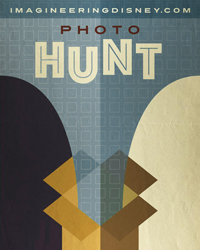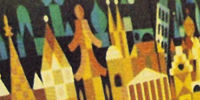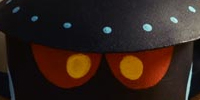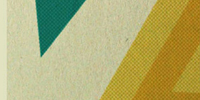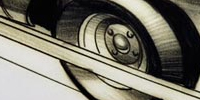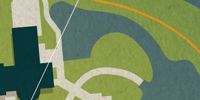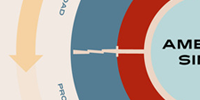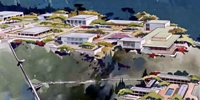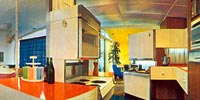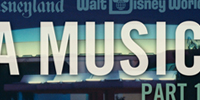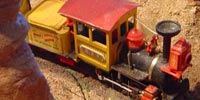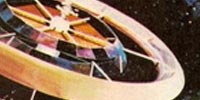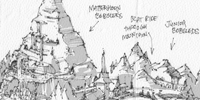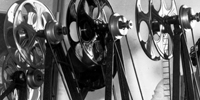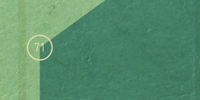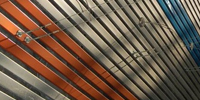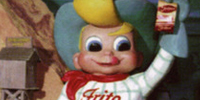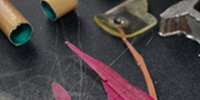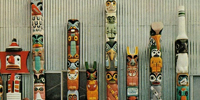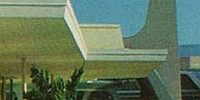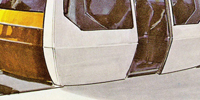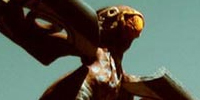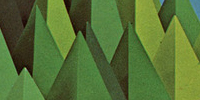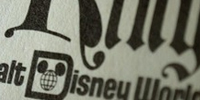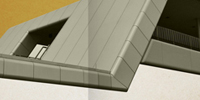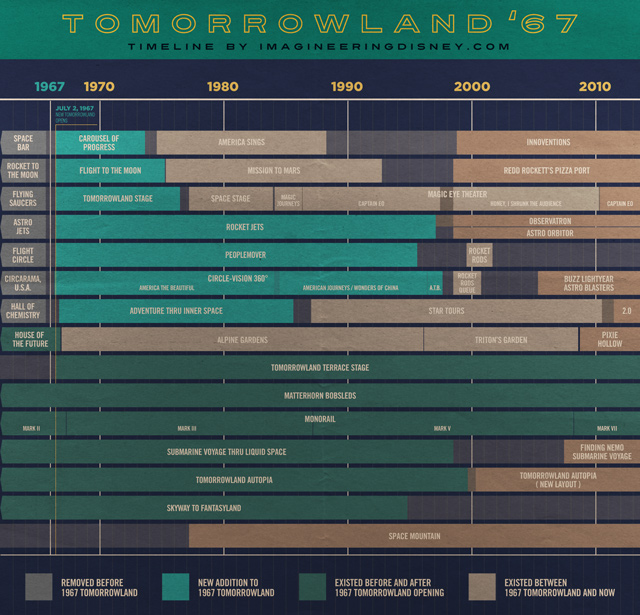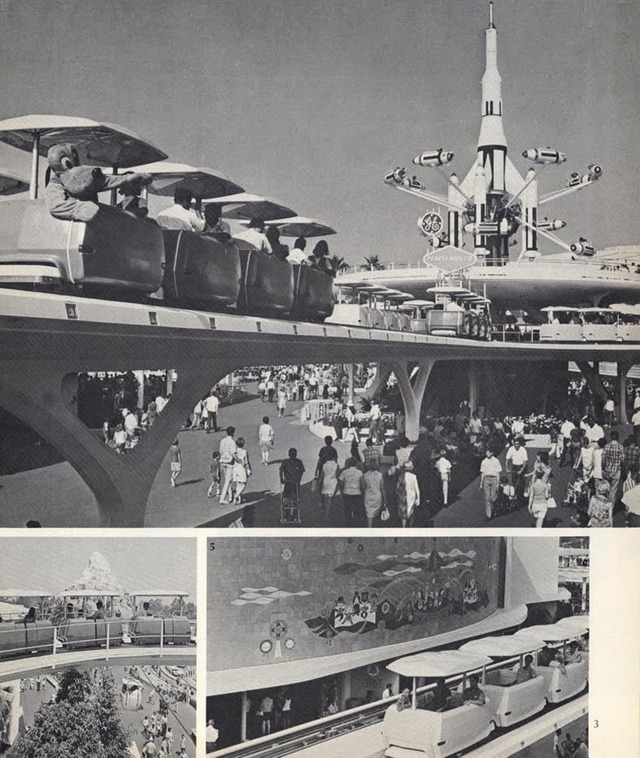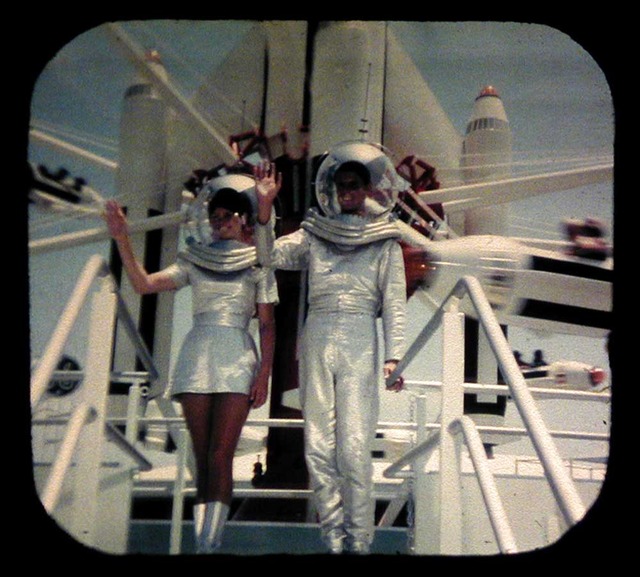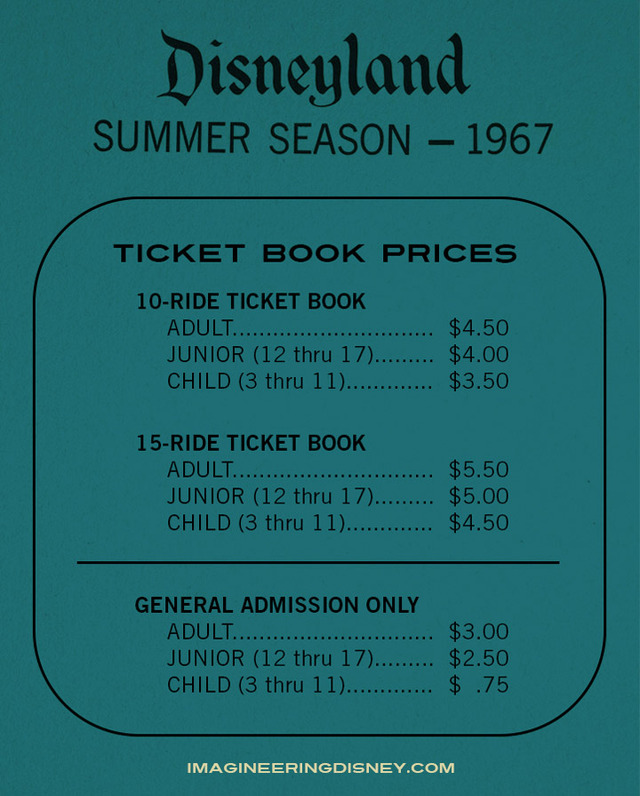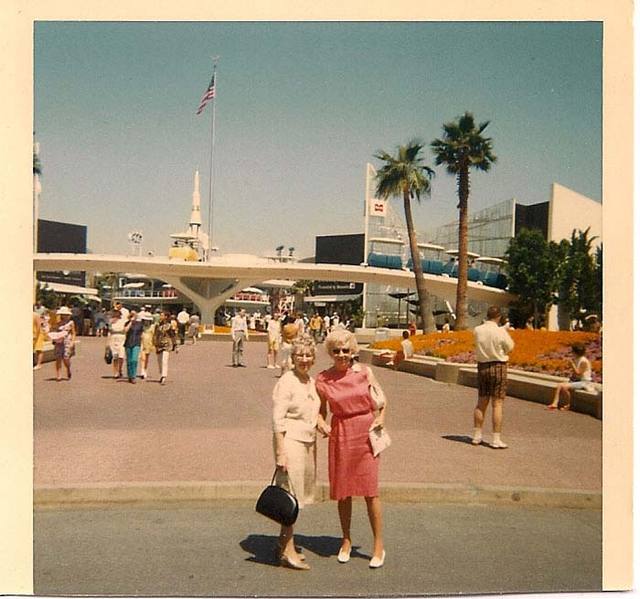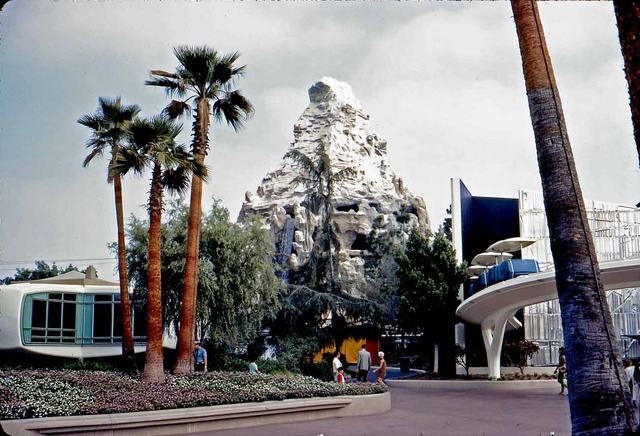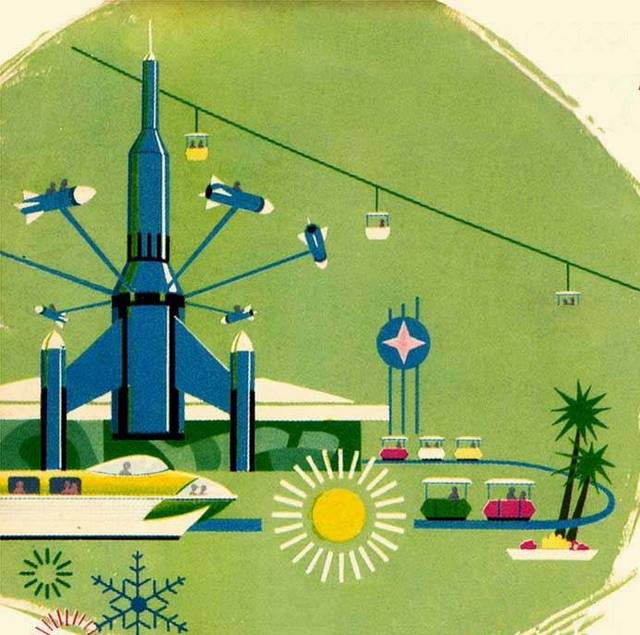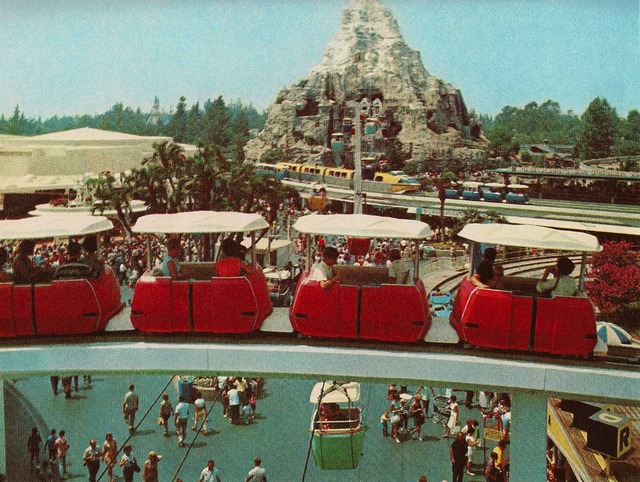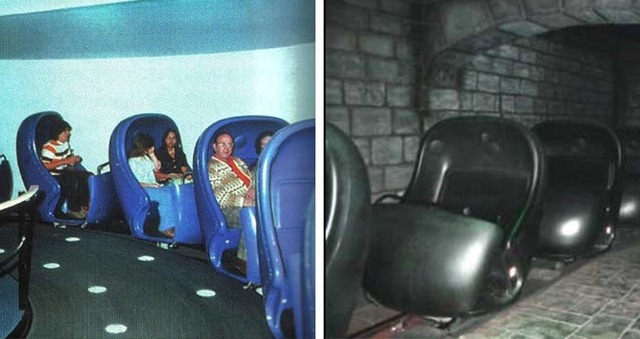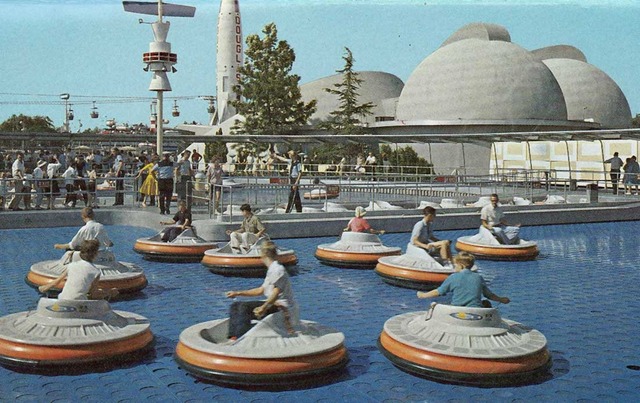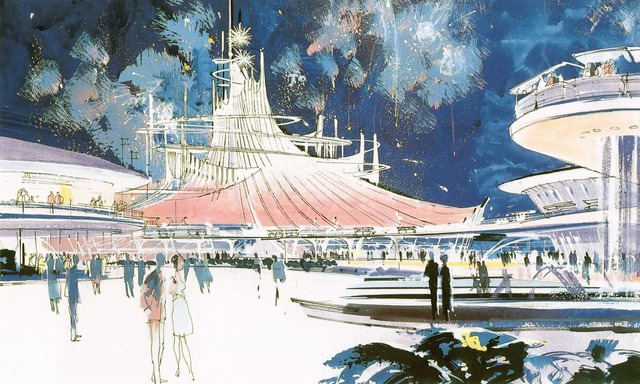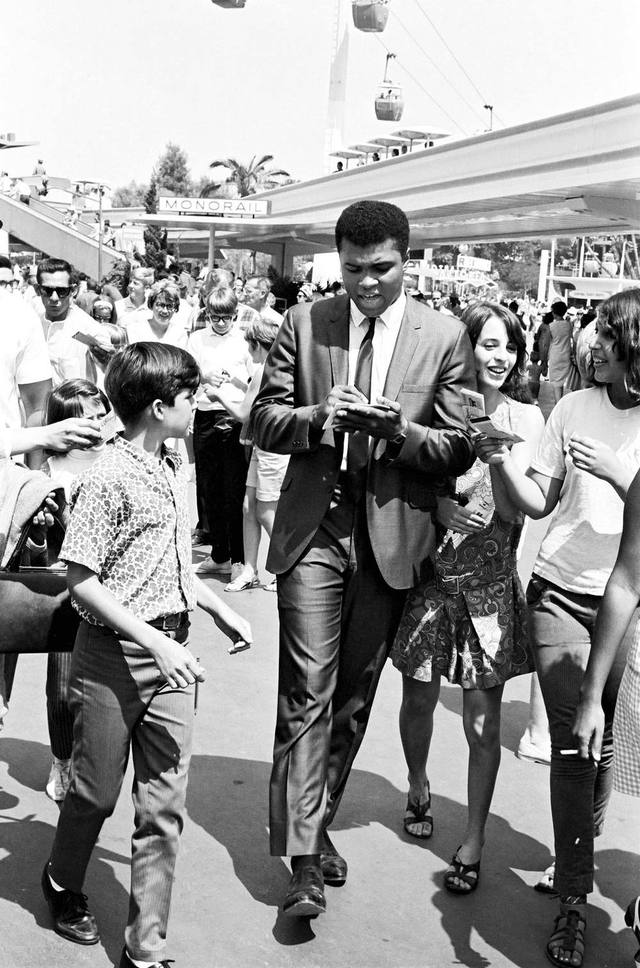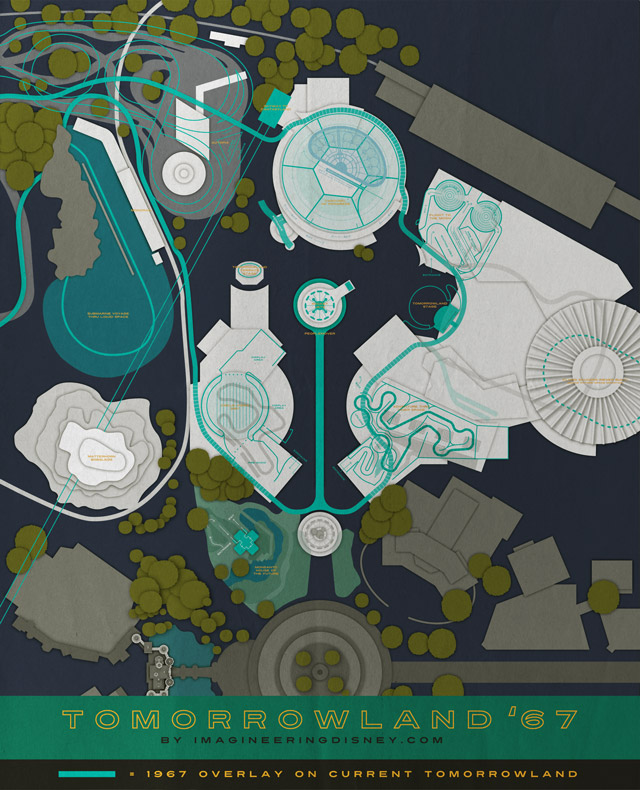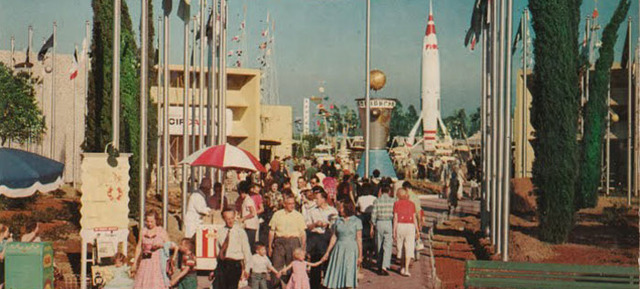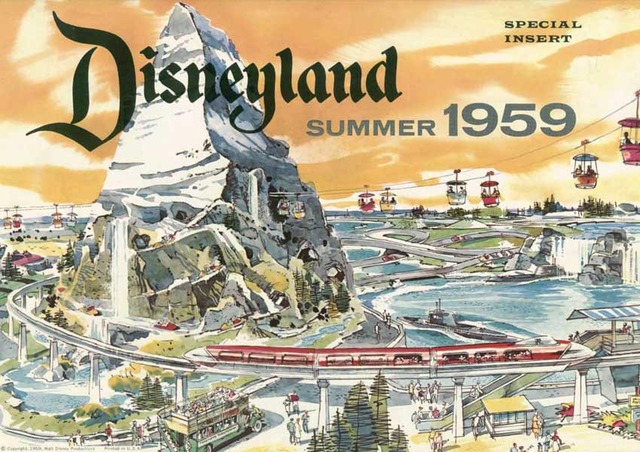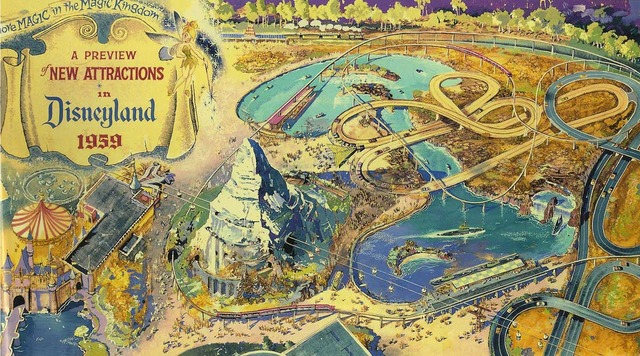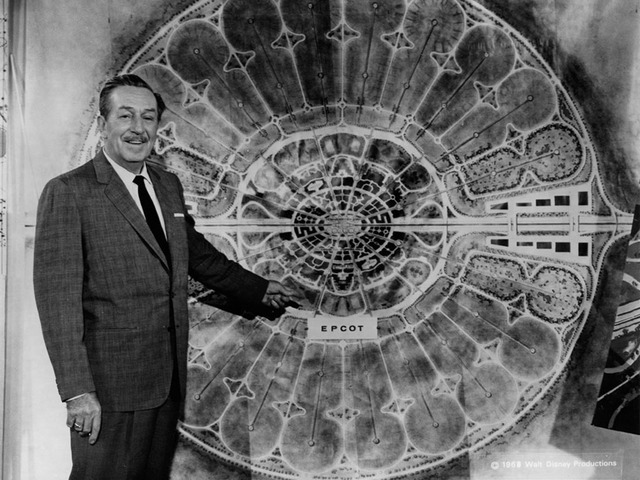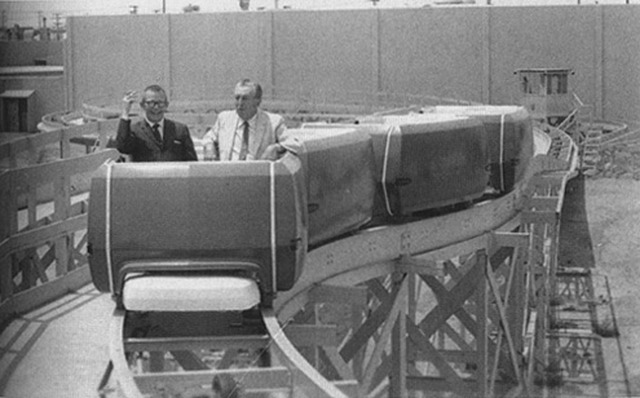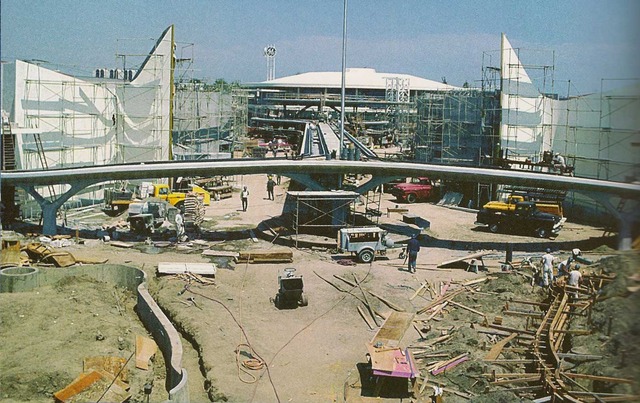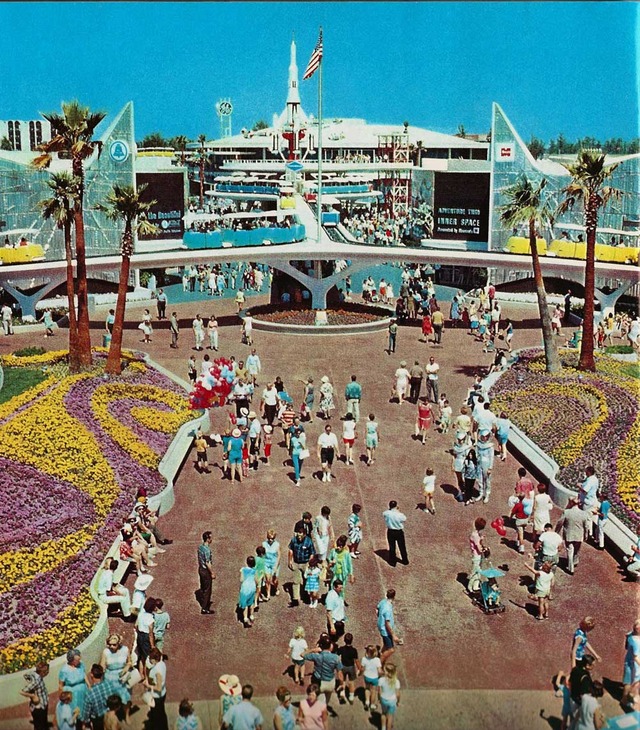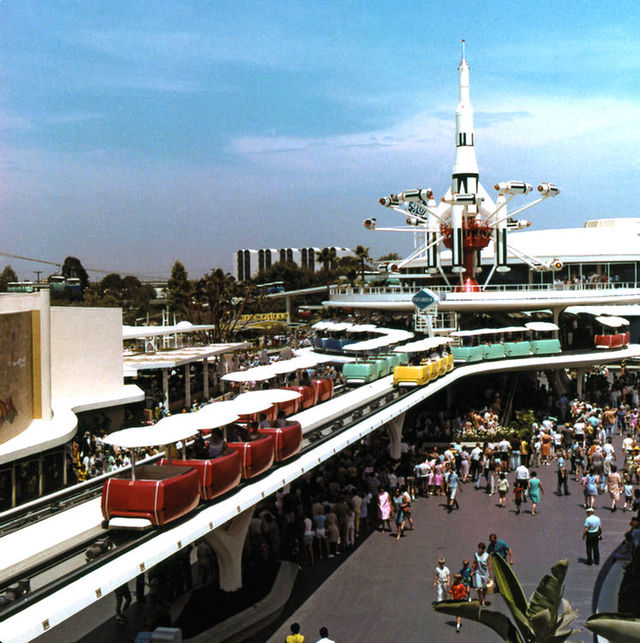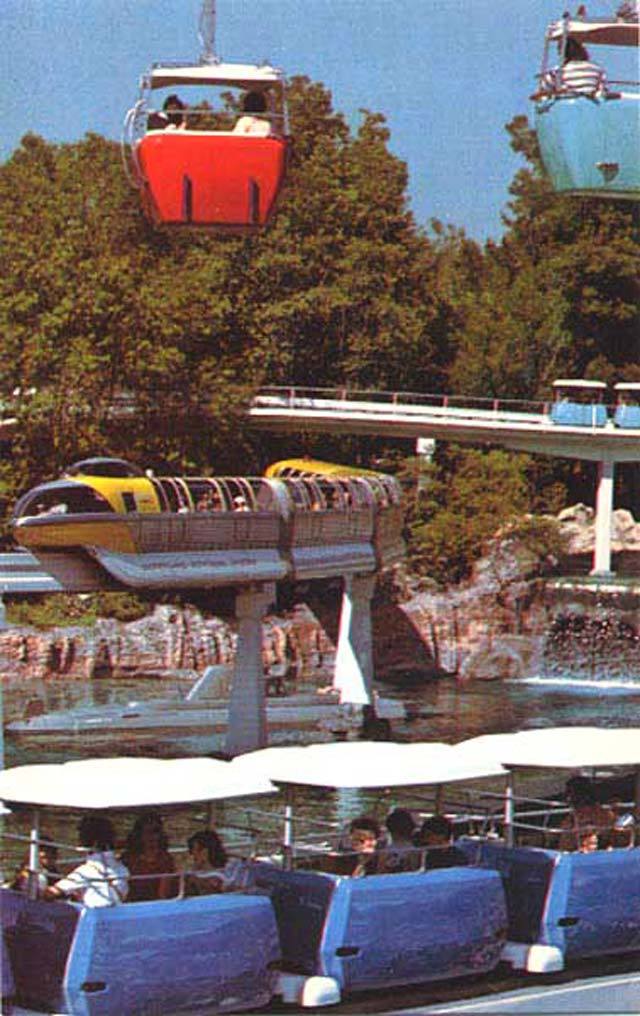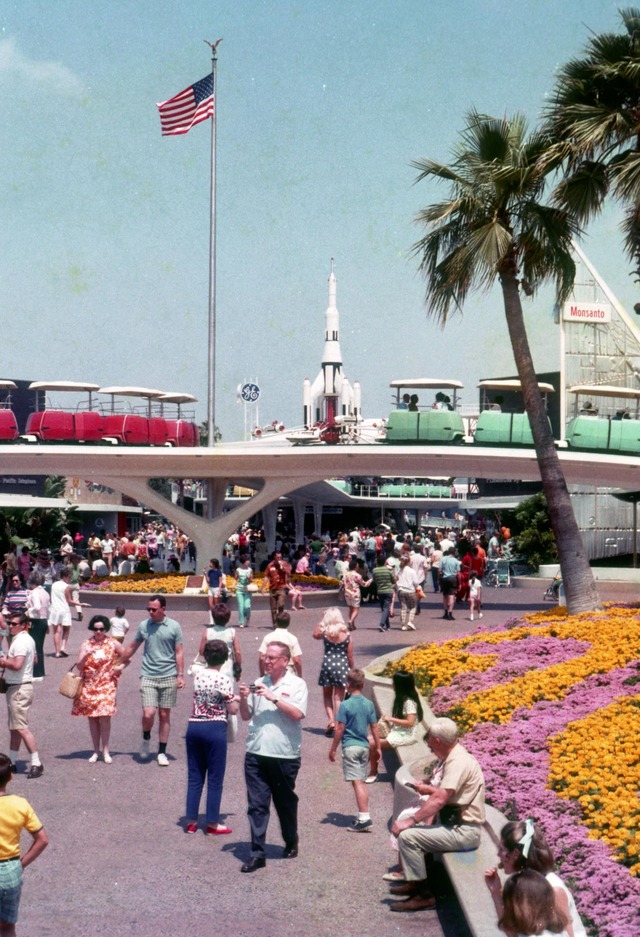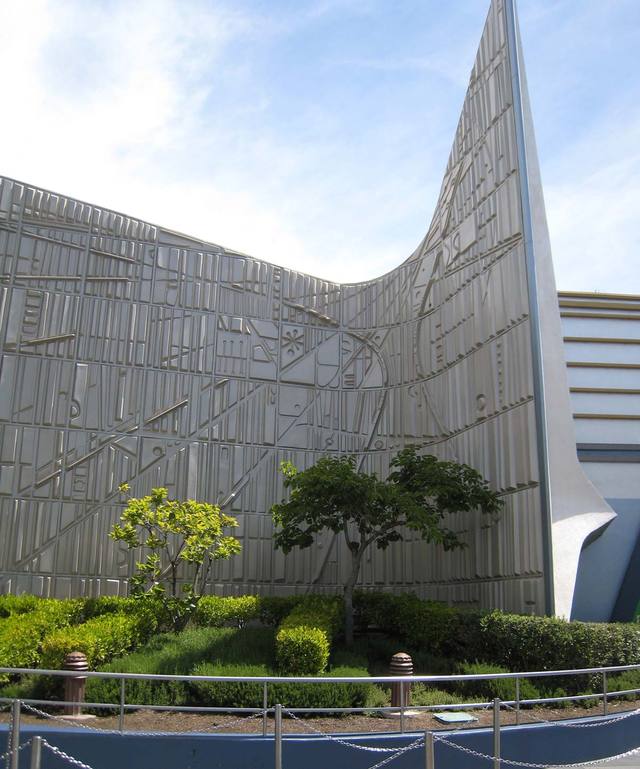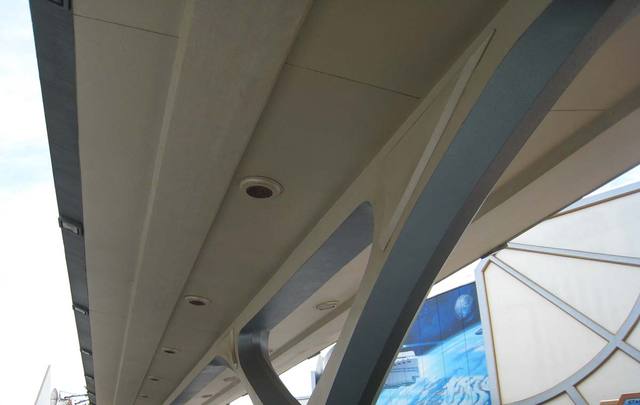Tomorrowland '67 [Part 3]
 Mitch
Mitch We continue our Tomorrowland '67 series and begin to focus on each individual Tomorrowland attraction. The first attraction on our list is none other than Walt Disney's esteemed Carousel of Progress.
Carousel of Progress
In case you’ve never hunted for photos of Disneyland’s Carousel of Progress, let me tell you... they are few and far between. If you have ever hunted for photos of the upper level of the attraction you will know... they don’t exist. I’m sure they exist but not on the internet or any book I’ve ever seen. In additon to some photos that do exist, we bring you some custom never-before-seen maps, models, and diagrams.
Walt Disney’s and his “Carousel Theater of Progress”
Walt Disney had a large hand in the development of Carousel of Progress. He kindly shared a behind-the-scenes look at some of the development of the unique attraction in a broadcast called “Disneyland Goes to the World’s Fair”.
He referred to it then as the “Carousel Theater of Progress” perhaps to emphasize that the ride was not a traditional carousel but a theater that rotated like a carousel. Perhaps at this point in time its title was going to include the word “theater”.
Either way, we see an excited and charming Walt Disney share an idea that had been evolving for years. It was an idea that dated back to the concept of Edison Square.
Edison Square’s “Harnessing the Lightning” Attraction
The idea of a family presenting inventions that enrich our daily lives began with Edison Square. Edison Square was to be a residential street and extension of Disneyland’s Main Street, U.S.A. but sadly never came to be.
It was to be located off the east side of Main Street just north of another never-built extension called Liberty Street. Edison Square would have shown “the passing from the ‘old’ of the 19th century to the ‘new’ of the early 1900s”. The exterior architecture would have been a composite of various major American cities from New York to San Francisco. An attraction called “Harnessing the Lightning” would have celebrated Thomas Edison using large dioramas of a family using electricity.
Instead of sitting in a theater guests would have walked from scene to scene in sort of a museum-type setting. Starting on the south side of the cul-de-sac you would have walked counter-clockwise until exiting the attraction on the north side of the street.
You would have experienced an American family sharing life pre-electricity, post electricity, during contemporary time, and what was called "The Electronic Age". Edison Square was never built but as you can see many of the ideas were used in the development of Carousel of Progress.
Carousel of Progress at 1964-65 New York World’s Fair
The Carousel of Progress was originally presented at the 1964-65 New York World’s Fair at General Electric’s Progressland pavilion.
The pavilion was divided into four main parts. The Carousel of Progress was the main attraction. The “Skydome Spectacular”, the “Medallion City” exhibit, and the “Nuclear Fusion Demonstration” were three post-shows found on the upper level of the pavilion.
 Skydome Spectacular at the 1964-65 New York World's Fair
Skydome Spectacular at the 1964-65 New York World's Fair
Carousel of Progress at Disneyland
Walt Disney had the components of the stage show shipped to Disneyland to be a part of New Tomorrowland. G.E. continued their sponsorship. A round two-story building was constructed in Tomorrowland where the old Space Bar food stand and eating area previously stood.
An outer ring of seating, divided into six sections, and six stationary stages in the center of the first level were added. The second level housed the Progress City model.
At this point Disneyland goers had not been exposed to highly animated human Audio Animatronic figures for very long. Mr. Lincoln arrived less than a year earlier (Remember, Great Moments with Mr. Lincoln opened at Disneyland while the World’s Fair was still open for another three months– two Lincolns!). Pirates of the Caribbean with its many human figures had only been open for some three and a half months.
Entrance, Acts 1-4
Guests entered a covered waiting area (see map above) on the west side of the building before loading into one of six revolving sections of seating. The seating area would then move clockwise to Acts 1 through 4.
Animatronic “Father” and “Mother” and their family members hosted the seated audience. They brought their visitors through time from the late 1800s up to the late 1960s/early 1970s, which was considered “the present and/or near future”. They shared the latest technological advancements of each period. Naturally they referenced products of the attraction’s sponsor, G.E.
Act 4 showed the family living in Progress City. A painted backdrop of the radial city’s center towers was visible out the living room windows in the back portion of the stage. It was as if their “all-electric home” was positioned in one of the city’s outer residential areas.
The home was equipped with color TV “with a built-in video tape recorder”. Mother enjoys her “garden club, literary society, and the ladies bowling league”. The temperature-controlled range allows Mother to “set the time and temper controls and relax.” (Perhaps not as entertaining as the voice-operated oven and the mishaps that ensue in Act 4 of today’s CoP at Walt Disney World). The couple references a “jet airport” where the kids are headed to meet Grandma and Grandpa. “They have their own home now in a community for senior citizens.”
Speed Ramp
The fifth rotation brought the audience to a moving speed ramp located directly in front the seating area, center stage. Guests were invited to “spring up out of your seats... through the doorway and up the moving ramp” where Act 5 awaited them. “On the second floor Mother and Father from our theater show will join you to tell you all about Progress City. So please keep moving. Don’t stand in the way of progress.”
The following two photos are from the World's Fair but they represent they Disneyland speed ramp layout. Provided by The World's Fair Community.
Upper Level, Progress City Model
This is where those custom models and maps come in handy. Thanks to a fan who wishes to remain anonymous we have three rare architectural drawings of the upper level. These have been invaluable in determining the guest flow and in the creation of these images.
At the top of the ramp the walkway curved and divided into three platforms leading guests southward in a clockwise direction.
These tiered viewing areas overlooked a large half-circle Progress City (also referred to as the City of E.P.C.O.T.) model. A fourth tier was for passing PeopleMover vehicles traveling north.
The PeopleMover track entered the building on the south side right after crossing the rooftop of Flight to the Moon. It curved around the east rim of the building and exited out the north. Passengers could gaze down at Carousel audience members and the model city.
The opposite side of the upper level was not accessible to guests. Was it used for storage? Did G.E. have a lounge up there? Is that where the maintenance guys took naps? What a large area to not be utilized.
Father and Mother hosted this Act 5 though audio dialogue only. The couple spoke of the city’s various features and spotlights shined down onto the model accordingly. Parts of the model were mechanically animated. Miniature cars, monorails, and carnival rides moved. (The remaining pieces of the model on display today in Magic Kingdom are not animated).
Walt Disney had recorded his ideas for the city of E.P.C.O.T. in a broadcast only months before New Tomorrowland opened and less than two months prior to his death. Little other exposure to this idea was available to the public at the time. The model city was not a part of the World’s Fair exhibit.
The Differences between E.P.C.O.T. and Progress City
Progress City as seen in Carousel of Progress represented an actual working city with full-time residents and could have existed anywhere in the United States. E.P.C.O.T. on the other hand was a prototype city intended for the Florida property (which later became Walt Disney World). It would have been the testing grounds and working template after which “Progress Cities” around the world would have been patterned.
Exit
Guest were asked to exit out doors on the south end of the building near the spot the PeopleMover entered. From there they proceeded in a clockwise direction facing north then down a non-moving outdoor ramp facing south. This ramp is still there today and is used to exit (and occasionally enter) Innoventions.
Relocation to Walt Disney World
Walt Disney World and its Magic Kingdom opened in October of 1971. G.E. felt that their products had been well presented to audiences in California and perhaps audiences in Florida would better enjoy their sponsored show. On September 9, 1973 Disneyland closed the doors to Carousel of Progress. Magic Kingdom built a brand new theater to house the show. This time there were no speed ramp, second level, or Act 5. The theater also rotated counter-clockwise for some reason. Maybe it made better sense to travel in time from left to right?
Somehow (consider it a miracle!) it still operates today and continues to be a nerd-favorite. The Progress City model was hacked into manageable pieces and also relocated to Magic Kingdom. Guests can see see a smaller portion of the model city while riding Magic Kingdom’s PeopleMover.
In a previous post specifically about the Progress City Model we shared just how much of the model was put on display at Magic Kingdom.

Other Rotating Theater Attractions
The Carousel of Progress was presented in two different theme parks and one fair yet it was never duplicated. Two other attractions, however, did use the rotating theater format. America Sings replaced Carousel of Progress at Disneyland.
Meet the World at Tokyo Disneyland used the same format as well. Plans for a Meet the World attraction in the Japan pavilion at Walt Disney World’s EPCOT Center fell through before the park opened. (Side note: We are currently trying to solve the mysteries around EPCOT Center’s Meet the World and need more info. Was a rotating platform ever built in the large show building behind the Japan pavilion? I have my doubts.)
A Sequel
EPCOT Center’s Horizons (1983-1999) is considered to be the continuation of Carousel of Progress' 20th Century story. In Horizons the family shares their 21st Century lifestyle. Horizons is considered by many to be the greatest theme park attraction ever built or at least the greatest attraction ever torn down.
Carousel of Progress Today
Although you cannot enjoy its sequel, you can still enjoy Carousel of Progress at Magic Kingdom’s Tomorrowland. Acts 1-3 are very similarly to those presented at the World’s Fair and at Disneyland.
Act 4 has been changed a small handful of times. When watching Act 4 today, remember that this version of “tomorrow” is from 1994 and boasts some great mid-90s technology. And sweaters. And Reeboks.
Progress City Model Today
It's wonderful to look at while passing by on a PeopleMover. The model suffers from lack of proper maintenance but nevertheless, it's still there. But please, no flash photography! It looks better under normal show lighting.
A comparison of Magic Kingdom's Carousel of Progress building from 70s and today.
Disneyland's Carousel Theater is still stands and is home to Innoventions. It's not a theater anymore but both lower and upper levels (with a very different configuration) are open to guests.
Working On-set
As a young boy in Magic Kingdom I dreamt of walking around those great Carousel of Progress stages. Some of my fondest moments of my creative career came when I was asked to do a few small projects at the attraction. I was honored to work on some of the animatronic figures, both human and animal, and some of the set work. I painted, repaired, got rid of one of the old “Hidden Mickeys” (my own decision), and adjusted a few things. I remember painting the finger nails on “Father”, fixing a couple of his necks, and painting parts of his four faces.
I even painted the laptop “Mother” is working on. She had been hitting it with her hand requiring some serious touchup work. I gave a couple of the “Rovers” some help. Of course I spent lots of time wondering around observing every detail, from the hand-painted backdrops to the various "G.E" markings to the animatronic birds on the tree branch. Of course I explored the backsides of each set.
Uncle Orville!
What a delight it was to work with some of the same set pieces presented by Walt Disney to the world all those years ago.
Related posts:
Tomorrowland '67 [Part 1]
Tomorrowland '67 [Part 2]
Carousel of Progress Like You’ve Never Seen It
THEN AND NOW: Walt at Disneyland
EPCOT City Model [Part 1]


